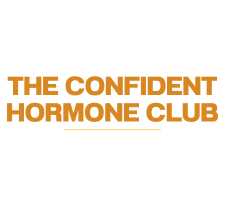
How we do things in bed is like a big team effort in our brain. There are different brain parts involved, some deep inside and some on the outer layer. It’s a bit like a team of musicians playing in harmony. In the middle of all this, there are some chemicals (like dopamine and serotonin) that seem to be pretty important in how we react sexually. There are also other chemicals (like adrenaline, acetylcholine, and neuropeptides) that might be part of the team too. To explore the neurobiology of human sexual responses to libido please read our article. Dive into the fascinating world of the mind-body connection in sexuality.
Exploring How the Nervous System Orchestrates Male Sexual Function
Getting an erection is like a well-organized process run by the central nervous system (CNS). We’ve learned that the CNS is in charge of the penis, whether it’s during excitement or when it’s not active. Our colleague, William D. Steers, points out that if there’s any issue in the network of nerve pathways connecting the penis and the CNS, it can cause problems with getting and maintaining erections. Enhance your brain’s functionality and tackle libido-related issues confidently! Join our Confident Hormone Club for a solution-oriented approach. Elevate your well-being today!
When a guy gets turned on, it’s like a balance game in his body. The nervous system in his penis and throughout his body has both ‘excitement’ and ‘calming down’ teams. The calming part tries to prevent erections, while the exciting part helps make them happen. When something sexy catches his eye or he thinks about a hot partner, or when there’s physical touch down there, the brain sends signals to start the excitement.
These signals make the penis release chemicals that tell the muscles to relax and fill up with blood, causing an erection. Medicines like sildenafil help keep the muscles relaxed and the blood flowing, making it easier to get and keep an erection.
The Purpose of Internal Controls in Human Sexuality
Having control over our sexual behavior might be like a built-in safety feature for humans. Even though sex is important for making sure our species continues, it’s a bit unclear why we have these careful control systems. One idea, suggested by our colleague John Bancroft, is that for most guys, these controls are helpful. They stop them from getting into trouble by having too much sex or doing risky things. These internal controls might also stop guys from having too many releases during sex, which could lower the chance of making babies. But, Bancroft thinks having too much control, like if there’s too much of a substance called serotonin, could lead to problems with how the body does sex.
The brain part called the hypothalamus is like a boss for sexual behavior. It connects the nervous system and the hormone system, and it also deals with basic actions like eating and being aggressive. There’s a special group of cells in the hypothalamus called the medial preoptic area (MPOA), and these are super important for sex. Our friend François Guiliano and his team found that when they stimulate these cells in rats, it makes them have erections.
A key player is the Medial Preoptic Area (MPOA)
The MPOA gathers information from different parts of the brain, helping to organize and guide how we act during sex. Another part in the hypothalamus, the paraventricular nucleus, also helps with messages from the brain and spinal cord. The drug apomorphine boosts erections by acting like a messenger called dopamine. It binds to special places in the paraventricular nucleus and the MPOA, turning on the pathways that make erections happen.
When you’re feeling turned on, a part in the brain called the paraventricular nucleus releases a hormone called oxytocin. This hormone usually helps with contractions during labor and releasing milk when breastfeeding. But guess what? In men, oxytocin is also like a messenger in the brain, and it has strong effects that help with getting and keeping erections. It basically switches on the nerve pathways that make erections happen, starting from the spinal center to the penis.
Exploring the Physiology of Orgasm and Ejaculation
Orgasm is a strong and brief feeling of intense pleasure that changes how you feel. Ejaculation, on the other hand, is a complex process with two parts (emission and expulsion) influenced by nerves and hormones.
PHYSIOLOGY of Ejaculation
Let’s talk about ejaculation in simpler terms. It’s a natural process your body controls, mainly through the autonomic nervous system. This process happens in two main steps: emission and expulsion. The important parts of your body involved in this are the distal epididymis, the vas deferens, the seminal vesicle, the prostate, the prostatic urethra, and the bladder neck.”
Physiology of orgasm
The definition of orgasm varies among specialties, such as endocrinology or psychology, leading to a lack of consensus. Orgasm is often linked with ejaculation, though they are physiologically distinct processes. Physiological features associated with orgasm include increased breathing and heart rate, high blood pressure, pelvic muscle contractions, rectal sphincter contractions, facial grimacing, and elevated PRL and oxytocin levels.
Studies using positron emission tomography show brain activation in specific areas during orgasm. The quality and intensity of orgasms can differ, influenced by factors like the speed of sexual stimulation buildup and androgen levels. Pelvic muscle exercises may enhance orgasmic pleasure, but they require significant time and effort. Orgasms induced through prostatic massage are considered more intense and diffuse but may not be preferred by many men.
After orgasm, men experience a refractory period, a temporary inhibition of erection or ejaculation. This phenomenon is not fully understood, with debates about the role of elevated PRL and serotonin levels.
Exploring How the Nervous System Orchestrates Female Sexual Function
An interesting discovery researchers found in women’s sexual function, was contrary to what a longstanding belief had been that activating the sympathetic nervous system (SNS) was bad for women’s sexual arousal. However, researchers discovered that having a certain level of SNS activation is actually important for women’s physical arousal. In a study in 2012, by (Cindy Meston), they used heart rate variability and vaginal pulse amplitude to measure SNS activity and genital arousal. They found that moderate increases in SNS activity were linked to higher genital arousal. Too low or too high SNS activation, on the other hand, was linked to lower genital arousal.
Then again, in 2015 – n 2015, the same researchers looked into using heart rate variability as a way to understand women’s sexual arousal outside the lab. They checked sexual arousal and overall sexual function in 72 women, and those with below-average heart rate variability were more likely to report sexual arousal problems and overall sexual issues compared to others. This suggests that heart rate variability might be a factor in women having difficulties with sexual arousal and overall sexual function.
Understanding the Complex Relationship Between Physical and Mental Arousal in Women
When women feel sexually aroused, there are two main aspects: physical arousal and mental arousal. Physical arousal involves changes in the body, like increased blood flow to the genitals, in response to sexual stimulation. Mental arousal is about how engaged the mind is during sexual activity. For some women, feeling physically aroused also makes them mentally excited, while for others, these two aspects don’t always match up. However, the connection between physical and mental arousal might not be crucial in diagnosing and treating issues with sexual arousal.
Research has found that not all women who say they have problems with sexual arousal actually have reduced physical arousal. Additionally, only some women with reduced physical arousal also experience low mental arousal. To create effective treatments for issues with female sexual arousal, it’s important for researchers to understand which women rely on physical sensations for mental excitement and which don’t. The ways women become aroused and what contributes to that excitement are essential factors in how well treatments might work.
Understanding the Vasocongestive Response in Women
Women’s sexual arousal has two parts: physical and mental. The physical part involves changes in the genital area when exposed to sexual things. The mental part is about how engaged a person feels during sex. For some women, the physical and mental parts go together, but for others, they don’t match up. Interestingly, not all women who say they have problems with arousal show physical changes, and not everyone with physical changes has mental arousal issues. To treat arousal problems in women, it’s important for researchers to understand which women rely on physical sensations for mental arousal and which don’t. This knowledge helps create better treatments for sexual arousal issues in women.
Understanding how women’s bodies work during sexual activity involves looking at different body parts. The vagina is a tube that connects the uterus to the outside, and its walls have three layers. The external part called the vulva, includes labia (folds), the clitoris, and erectile tissue. The clitoris is a Y-shaped organ made of glans, body, and crura. The vestibular bulb, similar to the male corpus spongiosum, is beneath the labia minora.
It is not clear how the nerves related to the uterus, cervix, and vagina work, in relation to sexual function. Uterine nerves come from the hypogastric plexus, a mix of sympathetic and parasympathetic fibers. This plexus has different parts that provide nerves to various organs. The central nervous system, including the brain, has a role in controlling female sexual function. The brainstem, hypothalamus, and forebrain influence spinal sexual reflexes. Hormones, sensory signals, and cognitive input also play a part.
During sexual arousal, spinal cord reflexes are crucial. The pudendal nerve is a key player in these reflexes. Two spinal sexual reflexes involve pelvic floor muscle contraction and engorgement of the clitoris, labia, and vagina.
In its natural state, the clitoris and vaginal muscles are contracted. Sexual stimulation leads to the release of nitric oxide, causing relaxation of these muscles, increased blood flow, and engorgement of the clitoris. This enhances sensitivity.
The vaginal epithelium (lining) absorbs sodium normally, but during sexual stimulation, neurotransmitters like nitric oxide and vasoactive intestinal peptide are released. This leads to increased blood flow, preventing sodium reabsorption and resulting in vaginal lubrication, essential for comfortable intercourse. Vaginal smooth muscle relaxation also leads to increased length and diameter of the vagina, especially in the lower two-thirds.

